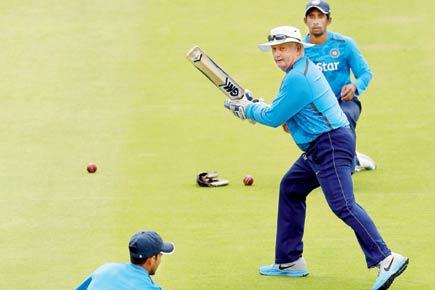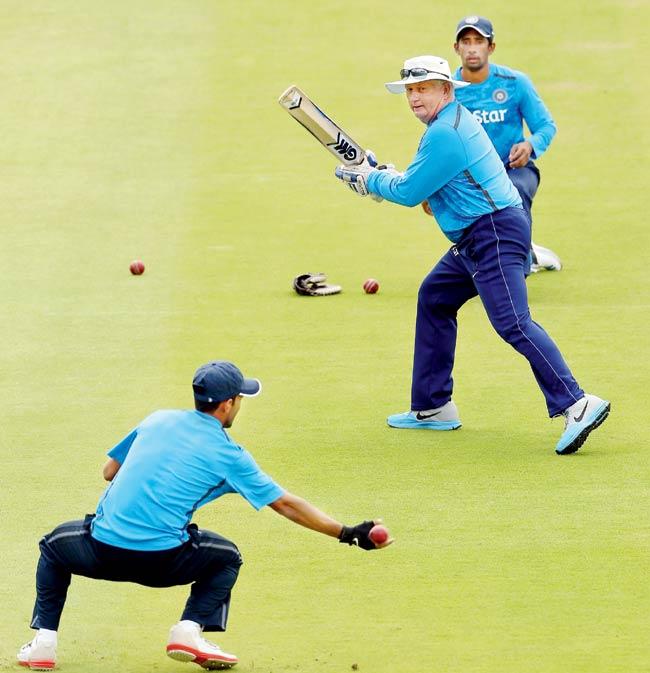Much of the pre-game routines are fairy-floss rather than the meat and potatoes that help win matches, writes the former Australian captain

India coach Duncan Fletcher gives catching practice to players ahead of the second Test against England at Lord's recently. Pic for representation purpose only
The wildly fluctuating series between India and England reflects Test cricket in the last decade. Where there was once domination with first the West Indies and then Australia ruling Test cricket, we now have parity, at least among the top five or six teams. Certainly there's a tendency towards home turf advantage but as we've seen with India and England, there's very little standing between the top teams.
India coach Duncan Fletcher gives catching practice to players ahead of the second Test against England at Lord's recently. Pic for representation purpose only
Is parity better for the game than dominance? There's no doubt cricket is a more interesting spectacle when there's a genuine tussle, as witnessed in the contrasting Tests played at Trent Bridge and then Lord's. Give bowlers some encouragement and the contest can be compulsive viewing.
ADVERTISEMENT
Dip in standard
Unfortunately, parity has come about because the standard of the better sides has slipped a little rather than the lesser teams raising the bar. Still, it's preferable having a log jam at the top of the table rather than one stand out team followed in the distance by a bunch of also-rans.
Why has parity only been achieved through a dip in standard? Despite being constantly informed batsmen are more dominant these days and fielding standards are better than ever, it doesn't match reality. Batting survival techniques have deteriorated, it's the power hitting that has dramatically improved.
And whilst some amazing catches and saves are enacted near the boundary, in the crucial area of the close cordon, chances are too often spilt because simple but critical footwork is lacking. The pursuit of the spectacular has outstripped the desire to master basics.
Much of the pre-game routines are fairy-floss rather than the meat and potatoes that help win cricket matches. One of my main concerns when the idea of international coaches was first mooted was that decisions would be taken to justify a large contract rather than be in the best interests of the player.
It seems that many coaches want to leave a monument behind and consequently there are numerous theories in existence replacing good old fashioned tried and tested techniques. It's interesting to reflect on the thoughts of two great practitioners of their art, Australia's Bill O'Reilly and the West Indies' Sir Garfield Sobers.
O'Reilly once advised a young cricketing hopeful; "If you see a coach coming son, run a mile." Sobers was even less subtle. When some ill-informed official had the temerity to suggest he didn't have the required qualifications to coach, Garry exploded; "What do you think I got my f#@%&*! knighthood for, singing?"
Sobers deplored the fact that; "Great cricketers are treated as freaks; admired for their feats but ignored for the way in which they achieved them."
Ignoring the basics
The basics of backing-up, running between wickets, catching in the slips and some of the ground fielding are being ignored. There's a tendency to salivate over the latest fashionable theory but gag on tried and tested techniques.
Two classic examples are slip catching and running between wickets. Many chances go down in the cordon because of the failure to initiate the slight turn of the foot that balances a fielder before attempting a catch away from the body. The tendency is to attempt a spectacular catch by simply falling sideways at the risk of spilling the chance.
Why do batsmen turn blind; not watch the ball leave the bowler's hand when backing-up and insist on running down the on-side of the pitch after playing a stroke, when that greatly increases the chance of a collision with a partner?
These are violations of simple basics that have brought good results and they should be learned before a budding cricketer reaches teenage years and be ingrained by the time they reach voting age. While many coaches seek notoriety, the players tend to concentrate on methods most likely to earn their fortune.
While the former is lamentable the latter approach is understandable. No other sport has three vastly different forms of competition and this complicates the issue of technique, especially in batting. However, Kumar Sangakkara is a classic example of how you don't have to sacrifice the basics in order to succeed in all three forms of the game. The aim should be to achieve parity by raising the overall standard.
 Subscribe today by clicking the link and stay updated with the latest news!" Click here!
Subscribe today by clicking the link and stay updated with the latest news!" Click here!







